January thus far has definitely been a little quieter on the birding front than I’d have liked with both terrible weather and the day job principally to blame. Working every day for the last two weeks is definitely not to be recommended at the best of times, least of all when there’s a new years list to get off the ground. Thankfully I did manage to squeeze in some early quality whilst still in Leeds with a Red Kite over the house and two Goosanders on a nearby river. Back home in Wales the feeders have been going absolutely crazy, by far the busiest I’ve seen them for several years, with both House Sparrow and Chaffinch numbers way up on normal. Each morning I’ve been treated to the delightful sight of our skeletal apple tree holding upwards of twenty birds, each waiting patiently for their turn on the sunflower seeds. Come evening and it’s the Long-tailed Tits turn for a feed with up to nine birds seen at any one time. As usual they don’t tend to stick around for long but are a very welcome visitor nonetheless. Other regulars have included our Ravens, Dunnocks, Great Tits, Blue Tits, Coal Tits, Robins, Blackbirds and Jackdaws not to mention fly-over Red Kites, Buzzards and our very first Jay. Despite such readily available birds however any chance of getting 2015 off to a decent start was going to necessitate a trip away from the house and, as tradition dictates, that meant a visit to the WWT reserve at Llanelli way back on the 4th.
In keeping with the previous two weeks worth of weather Sunday morning, and the whole day in fact, was dull, drab and particularly cold given a season of otherwise mild temperatures. In fact conditions were so dark that I doubted there would be any opportunity for photographs but who can resist the flash of colour that is a Moorhen beak, particularly when it’s your first of the year.
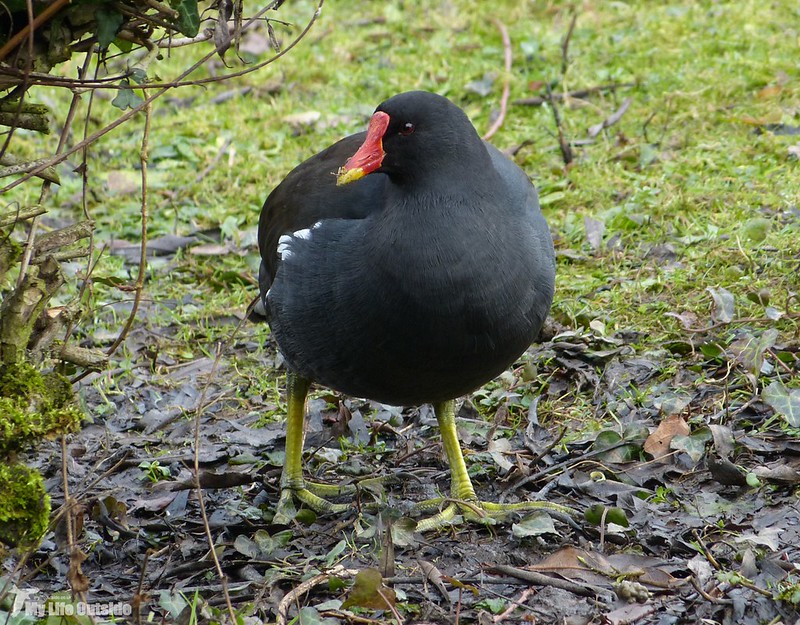
This skulking individual was to be found just inside the main entrance where a rapidly darting Goldcrest was also hunting for food. We watched its antics for a few minutes before losing sight in denser vegetation and couldn’t help wondering how such a tiny bird can stand such cold conditions, especially considering the way my fingertips were feeling at the time. Moving on and the usual influx of winter Robins and Blackbirds was clear to see before we arrived at a pleasantly well stocked feeder selection just outside the Michael Powell hide. It’s always been one of my biggest gripes here that bird feeders not behind glass are in very short supply so hats off to whoever has provided these. Clearly the local inhabitants were in agreement with Blue Tits and Great Tits seemingly very fond of the fat based offerings. It was while photographing one of the latter that I noticed an unusual extension to its upper mandible, a rare growth defect that I’ve observed on a couple of other birds previously though still always within the tit family. Each time the abnormality seemed to offer no obvious disadvantage and in this case even looked to be providing an ideal chisel shape with which to break off pieces of fat.
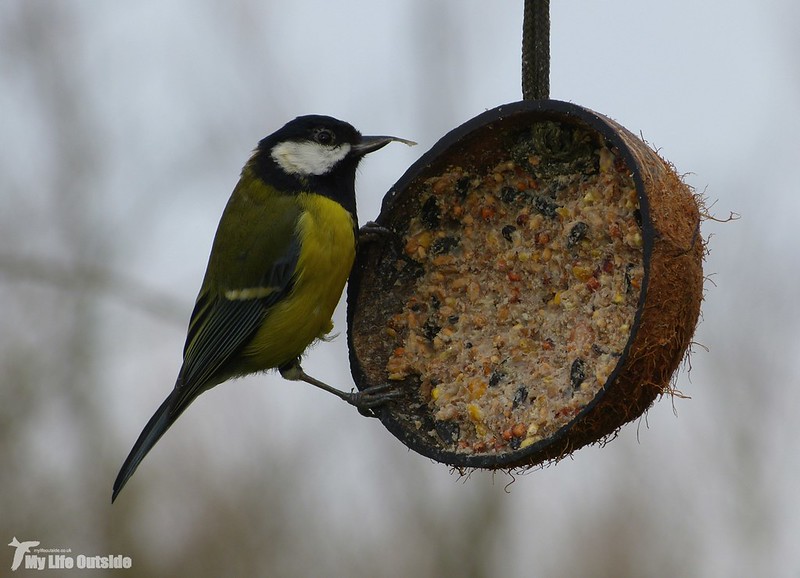
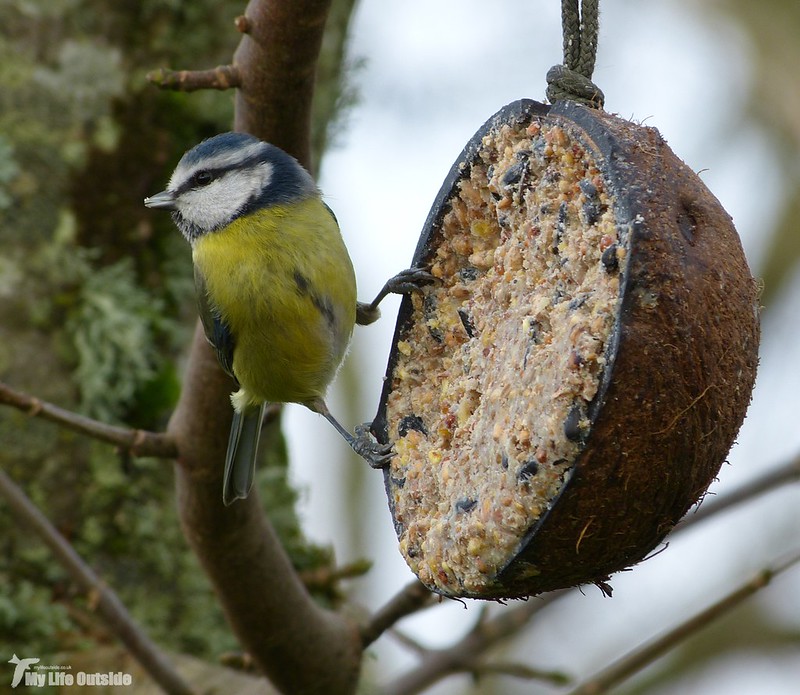
From the hide itself it was immediately apparent that Lapwings had arrived in a big way with upwards of 700 spread out on the lagoons. Mixed in were four Dunlin and at least three Greenshank, an early success considering the latters evasive nature for much of 2014. A couple of Grey Herons, three Little Egrets and one drying Cormorant had the fish eaters covered before a male Bullfinch and Reed Bunting popped up to add themselves to our tally. Better was to come however as moments later a Water Rail swam out from the bank and up to one of the small islands. This isn’t the first time I’ve seen such behaviour here but whereas our last sighting was relatively brief this individual proceeded to sit out in the open and have a good old preen. The display lasted for a good ten minutes during which Emma located another Water Rail walking along the mud a little further back. Quite remarkable for such an elusive species and definitely highlight of the day.
While we’d been busily engaged watching some quality Water Rail action one of the gathered Little Egrets had been slowly working its way towards us. By the time I noticed it was feeding directly outside the hide allowing great views as it shuffled its feet to disturb anything hiding within.
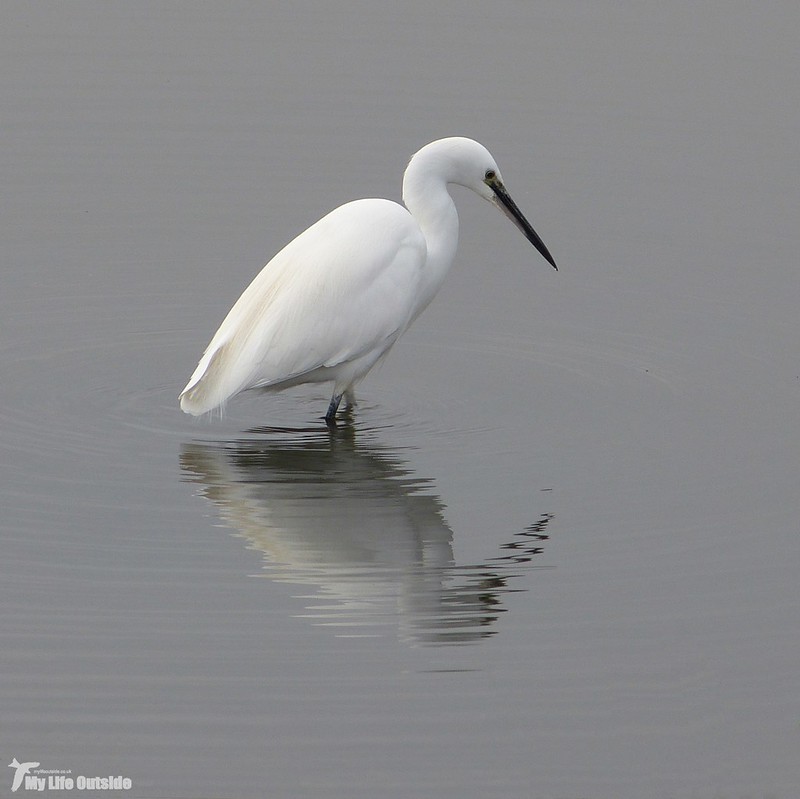
With conditions as they were I took a couple of videos which once edited should appear here some time tomorrow.
Moving on a single Redwing accompanied our walk to the British Steel Hide from which we added a couple of Common Snipe and another Dunlin. Way out on the marsh I could just about identify a couple of Oystercatchers but what I think was a pair of Brent Geese vanished before I managed to confirm. Then all of a sudden what had been a calm and serene landscape descended into absolute pandemonium as the previously settled flock of Lapwing took to the air as one. The sight and sound of such a spectacle really is one of my favourite aspects of the birding world but as usual the initial cause appeared elusive. Then we spotted it, a purposeful looking Peregrine Falcon perched out on the marsh and clearly in search of a meal.
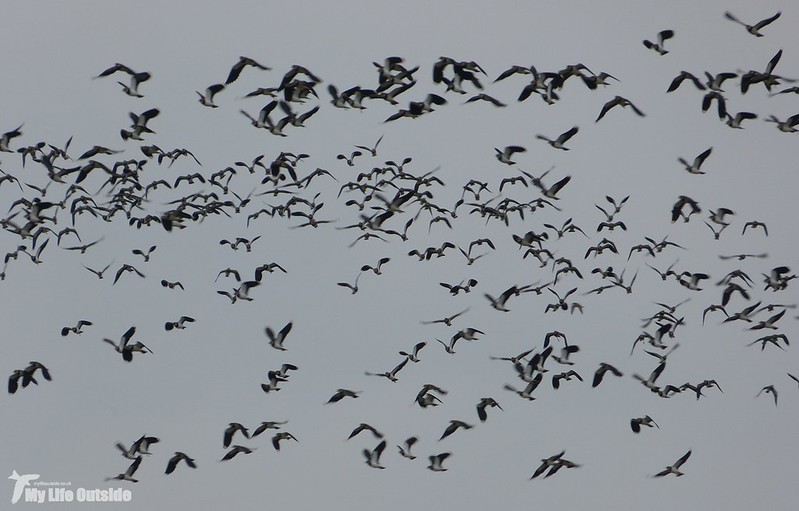

Fortunately for the Lapwings there was plenty of potential food out on the marsh so once the flock had settled we turned our attention to the NRA scrapes. Here the overwintering Wigeon flock could be found along with 35 Black-tailed Godwits, several Tufted Ducks and two other still unidentified ducks. At first they looked like slightly strange Wigeon but were definitely bigger and had distinctly different colouration though still within the same pallet. My best guess was and still is a couple of escapees from the captive collection though I’ve yet to narrow down an exact species.
Back on the move a Treecreeper and male Bullfinch combined with a Great-spotted Woodpecker to provide more variety than usual on the back straight. We had to wait until the Millennium Wetlands however to finally locate any Gadwall which in the end proved to be present in very good numbers. Gaining an accurate count was pretty tricky but an estimate in the region of 80 is probably close. Most were to be found in the less visited arms and channels of the main pool which also held a couple of Little Grebes (a species which appears less common here than it once did) as well as the resident Mute Swans and a few Pochard. We even kept an eye open for the Bittern which is reportedly once again in residence but as with previous attempts over the last seven years, we drew a blank. Chatting with reserve manager Nigel however this has been the most showy individual to date so fingers crossed we finally hit it lucky. After all we’ve had no such problem seeing Bittern at other sites nearby so surely it’s now our turn.



2 Comments
Unknown · January 18, 2015 at 7:24 am
Beautiful photos! I love the tits.
Adam Tilt · January 25, 2015 at 5:44 pm
Thanks Gunilla.